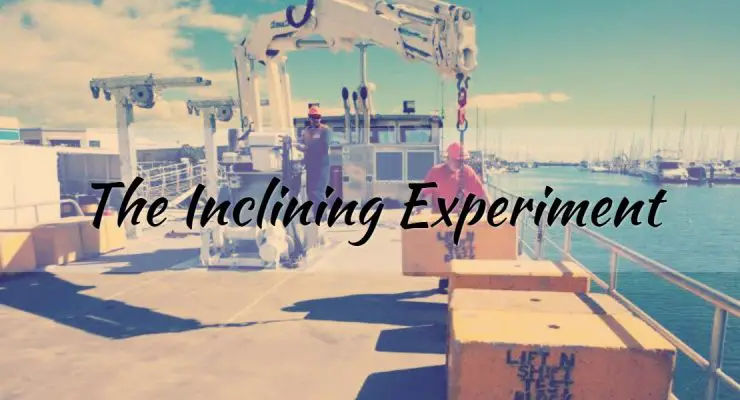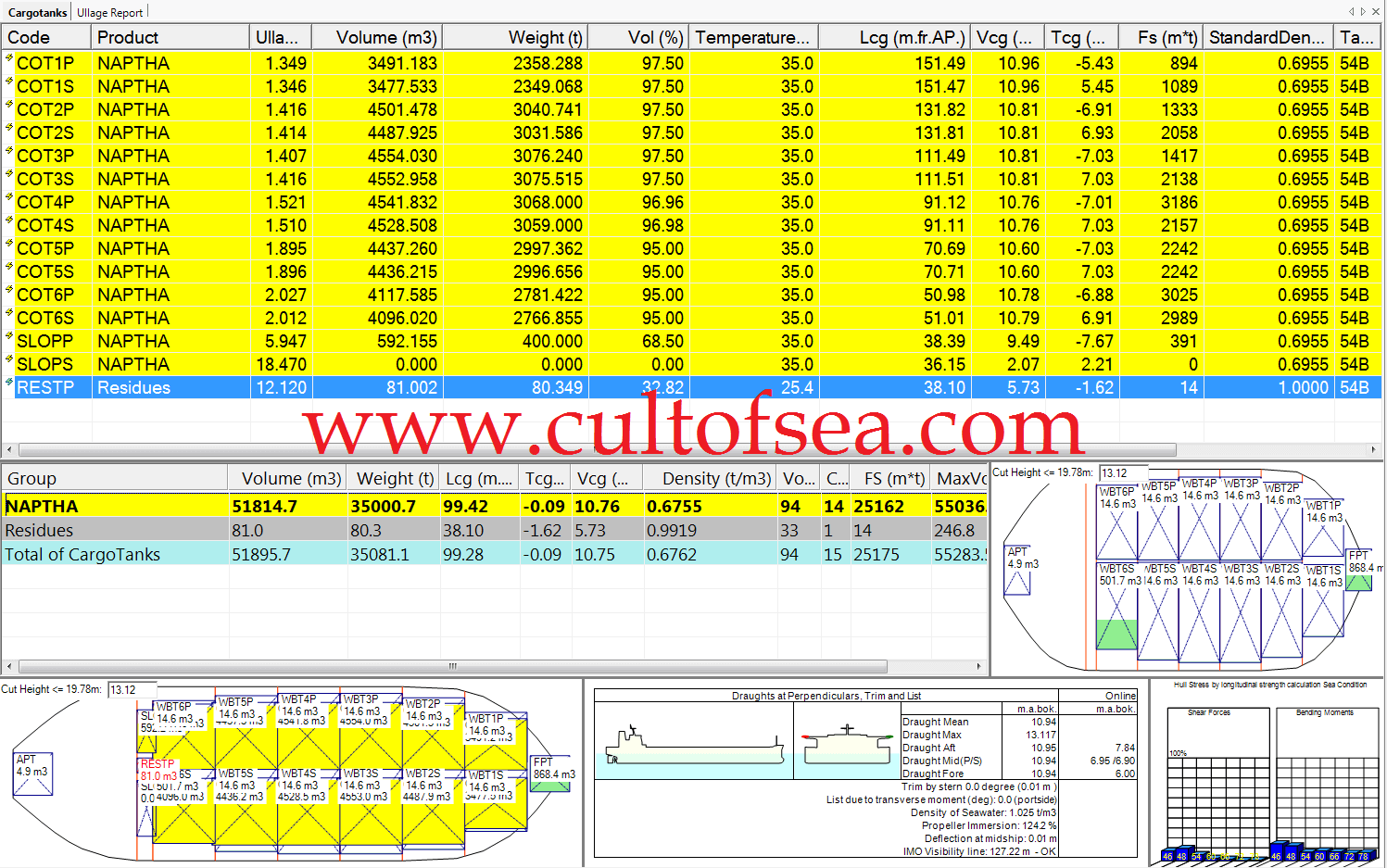Purpose Ship’s stability calculations not only rely on the ship’s geometry but also on the knowledge of where the ship’s centre of gravity (G) is positioned. Although the distance of G from the keel can be ascertained for various conditions that the ship may be in, it is essential that it is accurately known for one specified ship condition.To this end, the need to carry out an inclining experiment becomes necessary and from this, two facts should become known:the displacement; and the position of G in a known ship’s condition.The inclining test is carried out to find the … [Read more...]
Ship Stability Definitions related to Hydrostatic Particulars
Density of a substance is its mass per unit volume, normally expressed as tonnes per cubic metre in ship calculations.Relative Density of a substance is the ratio between the density of that substance and the density of fresh water.Displacement of the ship is the weight of the ship and its contents or the weight of water displaced by the ship in that condition.Displacement = Underwater volume of the ship x the density of the water in which she is floating.It should be noted that the volume of displacement is the underwater volume of the ship. When a ship proceeds from water of … [Read more...]

